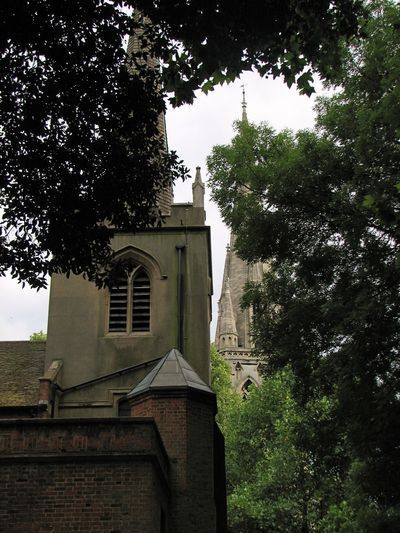Christmas without the humbug
BY DAVID HORSPOOL
Who is our most Christmassy writer? Everyone knows the answer to that one, especially in this year-before-the-anniversary year: yes, Dickens, again, whose Christmas Carol was merely the best known and most successful of several Christmas stories. You will be relieved to learn that this is not yet another Dickens blog, or even a blog about having had enough (already) of Charles Dickens. No, I would like to offer instead an alternative Christmas literary champion. The thought arose when I attended a rousing evening of prose, poem and song at St Mary's Old Church in Stoke Newington, North London last Sunday, at which an assortment of reasonably familiar (but not so familiar I remember their names) performers gave us readings in between perfectly-pitched a cappella renditions of carols and Christmas songs from all over the world by a choir a dozen strong, to whom our hostess, Selina Cadell, referred, gratefully, only as "those guys" (I have since discovered that they are known to some as the Occasional Choir). Considering that it was all part of a fundraising drive for an arts centre to be based at the church , a project that could hardly look more alien to the Victorian conception of what churches are for, this was an enjoyably old-fashioned type of evening, one in which it was hard to believe that the gale rattling the seventeenth-century window-frames was blowing across inner-city Hackney rather than wilder country heaths. There was no printed programme -- "too much faff, frankly", our MC explained -- but the readings I can reliably source came from Dickens (of course), from Thomas Hood, Hilaire Belloc, John Betjeman and Harold Nicolson, among others.
One writer's influence, however, both direct and indirect, was felt above all: Thomas Hardy. As you might expect, we had a reading from "The Oxen", with its extraordinary image of the beasts kneeling before the manger. Hardy manages to avoid Christmas schmaltz by painting the picture at one remove. The poet has not seen the remarkable sight, he has merely heard about it, and wants to believe it: "We pictured the meek mild creatures where / They dwelt in their strawy pen, / Nor did it occur to one of us there / To doubt they were kneeling then." The last line of the poem "Hoping it might be so", sums up with perfect economy the well-disposed doubter's feelings about faith and the festive season. Kit Wright used it as the title of a very much darker poem, which wishes that "There must be a place where the whole of it all comes right" in a world populated by murderers and rapists. Hardy's world has plenty of room for pain, of course, but his Dorset was brought to Stoke Newington in its more cheerful form, echoed by contemporary poets such as Catherine Simmonds, whose poem "The Stour at Hammoon" we heard, recalling the listless cattle and quiet riverbank of a Dorset summer (and recalling for me the tiny hamlet of Hammoon, where, as it happens, I got married ten years ago). There was also the very Hardyesque story of the church musicians whose home-brewed attempts to keep warm during the sermon lead inevitably to disaster. If it didn't actually come from Under a Greenwood Tree (no programme, you see), it was certainly in the spirit of that novel, which begins on a snowy Christmas Eve. The Hardy effect was still working for me as I strode home across sodium-lit pavements, imagining the rather more intrepid walks of the poet, who thought nothing of covering miles on foot to hear a decent sermon. Dorset had come to London, and Christmas had been rescued from the monopoly of London's most famous literary son.
Peter Stothard's Blog
- Peter Stothard's profile
- 30 followers




